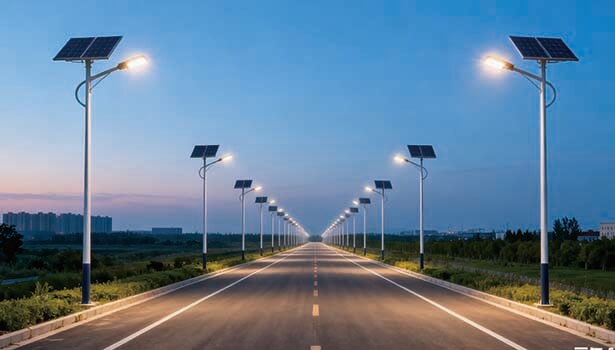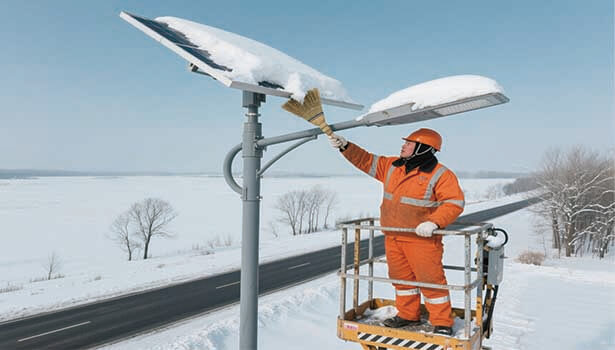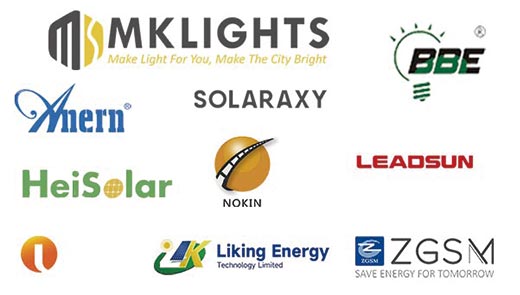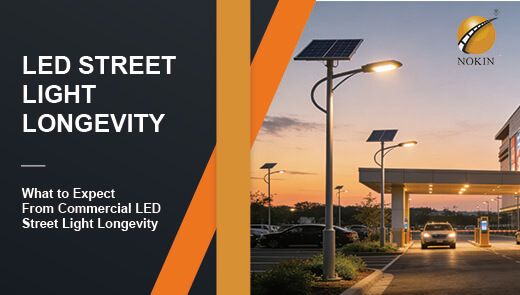Common Challenges in Solar Street Light Projects and How to Overcome Them
In the wave of global green energy transformation, solar street light has become an important choice for municipal construction, rural revitalization and park planning due to its advantages of energy saving, environmental protection and flexible installation. However, from the preliminary site assessment to equipment selection, and then later maintenance, solar street light projects often face all kinds of hidden risks, the slightest negligence may lead to substandard performance, cost overruns and even premature retirement of the solar street light system. In this paper, we will systematically dismantle the core challenges of the whole cycle of solar street light projects and provide solutions to help solar street light projects realize stable operation and long-term value.

Site assessment and planning challenges
Site assessment is the “foundation” of solar street light project, if there are omissions in the preliminary planning, the subsequent problems will erupt one after another like dominoes. At this stage, the three core challenges are shading, abnormal geological conditions and conflicting utilities.
Hidden shading problems that kill performance
The core of the solar street light relies on photovoltaic panels to absorb sunlight to generate electricity, but shading problems are easily underestimated in the preliminary survey, which has become the main cause of the performance degradation of the solar street light system. Many solar street light projects only in the summer midday survey, when the sun is full, dense vegetation, seemingly unobstructed area, to the winter foliage period or morning and evening charging critical time, may be buildings, utility poles and even trees covered by the shadow.
What's more, even partial shading, but also due to the photovoltaic panel “hot spot effect”, so that the shaded battery cells become loads, not only can not generate electricity may also overheat and damage the components. To solve this problem, it is necessary to prioritize surveys in winter (the longest shading season), cover the charging hours of 7-9am and 15-17pm, simulate the shading pattern throughout the year with tools such as solar path meters, and reserve PV panel power redundancy according to shading rate when designing, so as to guarantee the efficient power generation of the solar street lights.
Soil conditions and foundation surprises
Uncertainty in the underground environment is a common factor leading to delays and cost overruns in solar street light projects. While the surface of the site is smooth, the underground may hide rock layers, high water table or polluted soil, which directly affects the difficulty and cost of solar street light foundation construction. For example, in rocky ground construction, conventional excavators can not work, need to rent special equipment or even blasting. According to the U.S. National Renewable Energy Laboratory (NREL) data, about 30% of the solar street light project due to geological problems overruns, the average overrun ratio of 15% -25%.
In response to this risk, it is necessary to incorporate geotechnical investigation into the planning stage, clarify the underground soil structure, water level and bearing capacity through drilling and sampling, reserve geological contingency funds in the budget, and adopt adjustable foundation design such as precast concrete piles to ensure the foundation of the solar street light is solid.
Utility conflicts and access complications
The existence of underground pipelines (gas, electricity, communication pipelines) and overhead lines often puts solar street light construction in a dilemma, inadvertently damaging the pipelines and having to bear the maintenance costs and may face municipal penalties, while detouring the construction will increase the cost and construction period. In addition, narrow streets can not accommodate large construction vehicles, bridge loading restrictions hinder the transportation of solar street light equipment, residential areas at night to prohibit construction and other special restrictions, will also disrupt the original plan.
To avoid such problems, it is necessary to apply for pipeline drawings from relevant departments 1-2 months in advance, locate the pipelines on site jointly with third-party organizations, reserve buffer zones around the pipelines when designing, and verify the transportation routes of solar street lights before construction and negotiate with the surrounding areas about the construction time.

Equipment selection and quality issues
Solar street light is a system of “components working together”, and the compatibility and quality of PV panels, batteries, controllers and LED lamps directly determine the life and stability of solar street light system. This stage is easy to fall into the “compatibility failure” ‘counterfeit’ “climate mismatch” three major misunderstandings.
Component compatibility and integration problems
Quite a few solar street light projects to reduce costs, procurement of components from different suppliers, but ignoring the compatibility between components, resulting in solar street light system “their own war”, the performance of a substantial discount. Compatibility problems are mainly reflected in two aspects: one is voltage compatibility, if the output voltage of the photovoltaic panel does not match the rated input voltage of the controller, it will lead to controller overload and burn or not be able to charge the battery effectively.
The second is communication compatibility, intelligent solar street light sensors, controllers and background monitoring systems need to communicate in real time, protocol mismatch can not be realized remote regulation and fault warning. To solve this problem, priority should be given to the “one-stop supplier” procurement of complete solar street light system, sub-supplier procurement needs to verify the compatibility of parameters, the contract explicitly “system integration test” clause.
Counterfeit products and quality verification
The rapid development of the solar lighting industry has given rise to a large number of counterfeit and shoddy solar street light products, which are similar in appearance to the genuine ones, but use materials such as refurbished batteries and low-quality LED chips, as well as forged certification marks such as UL and CE, which are difficult to recognize. According to industry data, the failure of solar street light system caused by counterfeit components accounts for more than 40%.
Counterfeit batteries have serious capacity degradation after a short time of use, the life span of counterfeit LED lamps is far lower than that of genuine products, and counterfeit controllers may cause battery bulging or even fire due to overcharging protection failure. To avoid purchasing counterfeit products, you should choose suppliers who have been in the business for many years and have well-known solar street light project cases, require original certification and verification through official channels, sign “quality assurance agreement” to clarify the compensation terms, and at the same time, send samples to third-party labs to test the capacity of the batteries, LED luminous efficacy, and other key performances.
Selecting components for local climate conditions
Climate conditions (temperature, humidity, corrosiveness) vary greatly in different regions, and the use of generic components for solar street lights is prone to premature failure. For example, in the northern cold areas, ordinary lead-acid batteries will not be able to charge due to electrolyte icing; in the southern coastal areas, high humidity and salt may lead to corrosion of the solar street light PV panel frame and short circuit.
When choosing solar street light components, you need to combine the local climate, such as high temperature areas battery capacity needs to be extra reserved to deal with temperature-induced performance degradation. At the same time, suppliers are required to provide “Climate Adaptability Test Report” of solar street light modules to verify their stability in the target environment and ensure that the modules can be adapted to the local climate in the long term.
Solar street light cost control
The cost of solar street light project runs through the whole cycle, from the preliminary survey and design to equipment procurement, construction and building, and then to the later maintenance, if there is a lack of scientific control, easy to “budget out of control” “hidden cost surge” “Insufficient long-term return” and other issues, directly affecting the economic viability of solar street light projects.

Budget dynamic adjustment
Quite a few solar street light projects in the budgeting stage, only simple accounting for the direct cost of equipment and construction, ignoring indirect costs such as survey, design, emergency reserves, resulting in a large gap between the budget and the actual expenditure. Common budget deviations stem from “omissions”, such as geotechnical survey costs and pipeline relocation coordination costs, which are easily omitted.
Solar street light cost also stems from “price fluctuations”, photovoltaic components and other raw material price fluctuations, not reserved space easy to overspend due to price increases. To cope with the deviation, we need to use the “full-cycle cost method” to list all the link costs, with reference to the price fluctuations in the last 1-2 years to set aside a reserve, the project monthly comparison of expenditures and budgets, over the proportion of timely adjustments to protect the solar street light project budget is controllable.
Hidden cost mining and control
Hidden costs are easily overlooked but affect the total cost of solar street light project, including construction delay, inefficient operation and idle cost. When the construction period is delayed, geological problems and other causes of construction stagnation, will produce equipment leasing liquidated damages and so on. To control hidden costs, we need to do a good job of risk prediction to shorten the delay time, optimize equipment selection to improve power generation efficiency, combined with the demand for planning the number and location of solar street lights, to reduce the invisible consumption.
Optimization of long-term returns
The value of the solar street light project needs to be maximized through long-term operation to achieve returns, ignoring the optimization may “energy saving does not save money”. Energy saving can start from “energy efficiency”, select high-efficiency PV modules and low-power LED lamps, high-efficiency equipment can make the solar street light system to increase the annual power generation by 15% -20%.
Proactive maintenance practices
Solar street lights are not “install and forget” devices, and lack of maintenance can lead to performance degradation year after year - it's been estimated that unmaintained solar street lights can lead to performance degradation year after year. - It has been estimated that an unmaintained solar street light system can lose more than 30% of its power output after 3 years. Proactive maintenance focuses on the four core components: panels, batteries, electrical connections and controllers.
Cleaning and maintaining solar panels
Solar Street Lights Dust, bird droppings, fallen leaves and other debris on the surface of PV panels can block the sunlight reducing power generation efficiency. Experimental data show that when 50 grams of dust accumulates on each square meter of PV panels, the power generation of solar street lights will drop by about 15%.
Therefore, the cleaning and maintenance of PV panels need to follow clear standards: cleaning frequency, ordinary areas cleaned once every three months, sandy, dusty, bird droppings areas once a month. In terms of cleaning method, use a soft brush or sponge dipped in neutral soapy water to gently wipe, and avoid scratching the glass with a hard scraper or damaging the coating with corrosive detergents. Cleaning process also need to pay attention to power outages, to prevent electrocution, if the photovoltaic panels are installed in the high altitude, the need to use professional climbing equipment, to protect the solar street light maintenance operations safety.
Regular battery monitoring
Battery is the “energy warehouse” of solar street light, and its life span directly determines the maintenance cost of solar street light system. Whether it is lead-acid battery or lithium battery, long-term overcharging, over-discharging or capacity degradation will lead to shortening of solar street light lighting time or even system paralysis.
For battery monitoring and maintenance, it is necessary to establish a regular inspection mechanism: monthly battery voltage test, lead-acid battery normal voltage of 12.0-13.8V (12V system), lithium batteries 3.2-3.6V (single), below the lower limit of the need for timely supplemental charging. If the attenuation to the rated capacity of less than 70%, need to replace the new battery. At the same time, to do a good job of solar street light battery environmental control, battery box needs to be well ventilated to avoid high temperature sun exposure (summer can be installed sunshade), the northern regions of the winter need to be wrapped in thermal insulation cotton, to prevent low temperature affects the performance of the battery.
Securing electrical connections
The connection terminals between solar street light PV panels and controllers, batteries and lamps, if loose or corroded, will lead to increased contact resistance, not only wasting electricity, but also due to heat triggering a fire, in humid or coastal areas, terminal corrosion problems are more prominent. In order to ensure a solid electrical connection, regular maintenance of solar street lights is required. If rust is found on the terminals, sandpaper is used to polish them cleanly, and anti-corrosion grease such as petroleum jelly is applied. The use of waterproof junction box, to ensure that the rain will not penetrate into the terminal area, and at the same time, fixed cable, to avoid pulling the terminals loose, from the source to reduce the potential risk of poor contact with solar street lights.
Keeping controllers updated
The controller is the “brain” of the solar street light, responsible for regulating the charging, discharging and lighting modes. If the controller software is outdated or hardware failure, it will lead to the decline of solar street light energy management efficiency, such as overcharging damage to the battery, lighting time error and other problems. Therefore, controller maintenance needs to take both software and hardware into account, check the controller operation status every quarter, see whether there are over-voltage, over-current and other fault codes on the display, and investigate and solve the problem in time. If the controller is used for more than 5 years, even if there is no obvious fault, it is also recommended to replace, because the old controller has high energy consumption, replacing the new controller can reduce 10%-15% of the energy loss of the solar street light, and improve the overall efficiency of the system.
Although the challenges of solar street light project are many, they are not impossible to crack. From the preliminary site survey of “meticulous”, to the equipment selection of “accurate fit”, to the later maintenance of “active and efficient”, each link of control, are solar street light Each link of control is the guarantee of stable operation of the system. Only in this way can the solar street light really become a bright light to illuminate the green future, and inject lasting power for the sustainable development of cities and villages.




